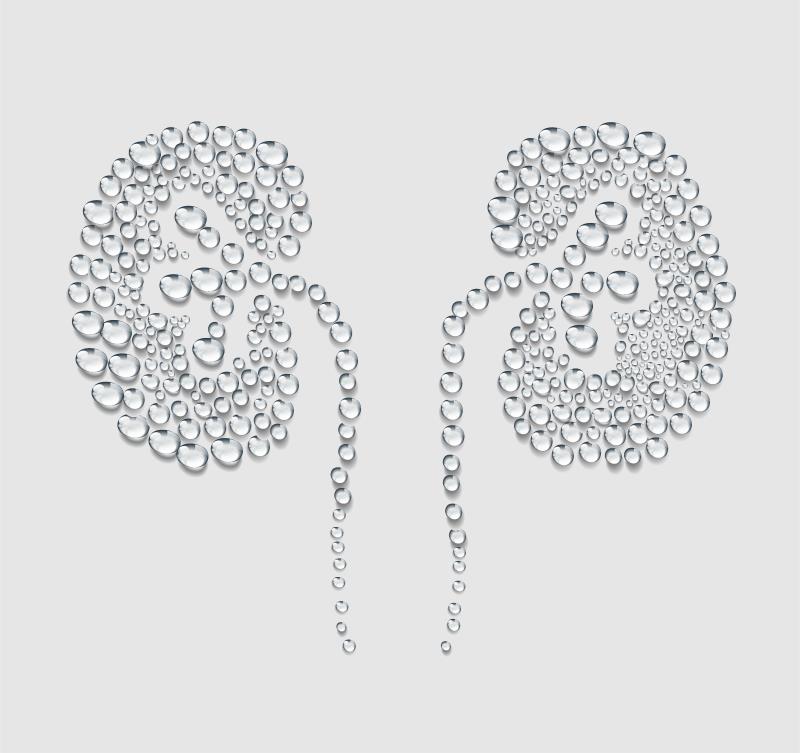
Proactive treatment with high-dose intravenous (IV) iron reduces the risk for type 1 or classic myocardial infarction (MI), but not type 2 MI, in patients with chronic kidney disease (CKD) on dialysis, according to a prespecified secondary analysis of the PIVOTAL study.
“Clinical nephrologists know that coronary artery disease is highly prevalent in CKD patients and in those who require haemodialysis,” said lead investigator Professor Patrick Mark from the Institute of Cardiovascular and Medical Sciences, University of Glasgow in Glasgow, UK during his presentation at the ERA-EDTA 2020 Virtual Congress. “But there are surprisingly very limited data about how frequently MI occurs, what type of MIs patients have, and the prognostic significance of these infarctions.”
High- vs low-dose iron: Which is the better approach?
Mark and his team investigated the effects of proactive high-dose IV iron vs reactive low-dose IV iron in 2,141 adult CKD patients on haemodialysis, looking specifically at MI. Patients were on erythropoiesis-stimulating agent (ESA) at study enrolment, with a ferritin concentration of <400 μg/L and transferrin saturation of <30 percent. Patients were randomized to receive a maximum of 400 mg iron sucrose monthly (high-dose iron, n=1,093) or 0–400 mg iron sucrose monthly (low-dose iron) to maintain a ferritin level of 200 μg/L and a transferrin saturation of at least 20 percent. [ERA-EDTA 2020, abstract MO016]
If ferritin exceeded 700 μg/L or transferrin saturation exceeded 40 percent in the high-dose group, further iron was to be withheld until the next blood test a month later. The primary endpoint was a composite of MI, stroke, hospitalization for heart failure, and death from any cause. All endpoints and deaths were adjudicated by an independent committee blinded to treatment allocation.
Time to first MI — type 1 or type 2, or ST-segment elevation MI (STEMI) or non-STEMI — and the composite of MI and MI-related deaths were assessed in the secondary analysis.
Winner of the iron ‘battle’
At a median follow-up of 2.1 years, 8.4 percent of patients had experienced an MI. The risk for nonfatal MI was 31 percent lower with the high-dose than the low-dose group (hazard ratio, 0.69; p= 0.01).
“As for the rates of type 1 MI, these were 2.5 times higher than for type 2 MIs,” said Mark. “Non-STEMIs were 6.6 times more common than STEMIs, but patients treated with the high-dose iron had a substantial reduction in fatal and nonfatal MI vs the low-dose group.”
Mortality at 30 days was high at 11.3 percent, and up to 39.8 percent at 1 year.
On why high-dose iron may be protective against type 1 MI, Mark has this to say: “By using more iron, the haemoglobin rose faster, improving oxygen delivery to the myocardium.” It might also be that patients treated with the high-dose iron required lower doses of ESA vs those given the low-dose iron, which may be of added benefit, he added.
He continued that ESAs have been demonstrated to increase the risk for cardiovascular (CV) events in CKD patients, hence, lower doses of it could have lowered the risk for MI in the study.
As statins have shown no benefits for prevention of CV events, Mark said high-dose IV iron may fill that space. “It may be one of the few therapies that might actually reduce MI in patients on maintenance dialysis … high-dose iron is an interesting concept we have to think about.”
However, as the results were for secondary analysis, it may not be compelling yet to change clinical behaviour, said Dr Lucia Del Vecchio from Alessandro Manzoni Hospital in Lecco, Italy.